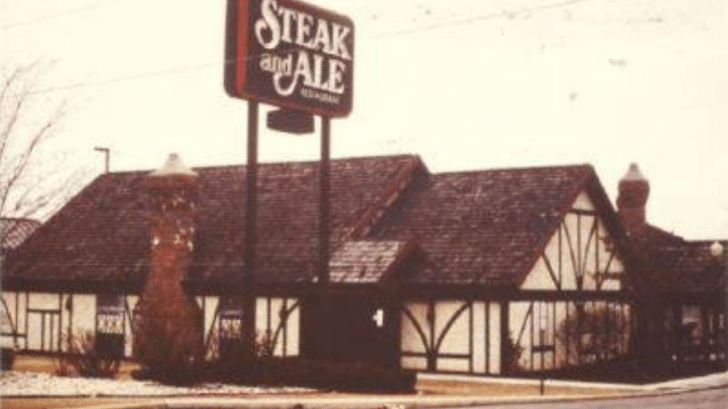Ah, the 1970s—a time of groovy tunes and iconic eateries. If you were lucky enough to experience these restaurants before they bid their final farewell, consider yourself a true nostalgic connoisseur.
If you’re a ’70s kid, you probably have fond memories of your favorite restaurants that might not be around anymore. Nostalgia often hits hard when we think back to those classic dining spots that once filled our childhoods. From delicious burgers to all-day breakfasts, these eateries held a special place in our hearts. Here’s a rundown of some of the beloved dining spots that once graced our culinary landscape.
Let’s take a trip down memory lane and revisit 15 popular restaurants that only ’70s kids will remember.
Burger Chef: Flame-Broiled Delights
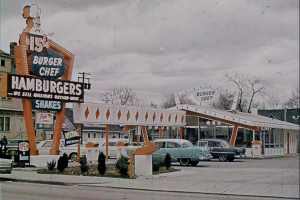
Back in the day, Burger Chef was a heavyweight in the fast-food game, giving even McDonald’s a run for its money. With their flame-broiled burgers like the mouthwatering Big Shef, this Indiana-based chain held a special place in the hearts and appetites of many. While it closed its doors in the ’90s, the memory of those savory bites lingers on.
Howard Johnson’s: Where Orange Roofs Met Delicious Fare
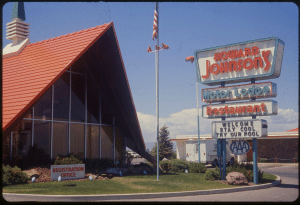
The orange-roofed wonderland of Howard Johnson’s was a favorite for families seeking fried clams and an impressive 28 flavors of ice cream. This chain had over 1,000 locations at its peak, but its story took a different turn when Marriott acquired it in 1979. Soon after, both company-owned and franchise locations gradually vanished.
Gino’s Hamburgers: From Gridiron to Grub
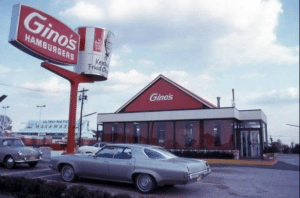
Gino’s Hamburgers, founded by NFL players, scored big with their signature Sirloiner burger made from juicy sirloin steak. With locations spread across the East Coast, it became a staple for burger enthusiasts. Although most Gino’s locations turned into Roy Rogers after Marriott’s acquisition, a couple of Gino’s Burgers and Chicken spots in Maryland keep the memory alive.
Bob’s Big Boy: A Burger Chain’s Evolution
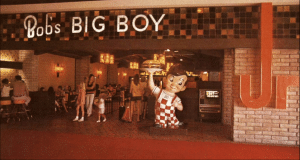
Bob’s Big Boy, famous for its delectable burgers, joined forces with Marriott in 1967. The partnership led to a rapid expansion throughout the ’70s, but like the ebb and flow of time, the chain evolved under various names. Though some locations continue to thrive, Bob’s Big Boy never quite recaptured the glory it enjoyed during its ’70s heyday.
White Tower: A Towering Presence in Fast Food
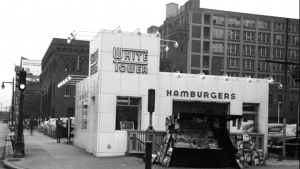
White Tower, a fast-food pioneer since 1926, was known for its hamburgers and its staff of “Towerettes.” Though its heyday was in the ’50s, White Tower remained a popular choice well into the ’70s. While most locations faded away, one enduring White Tower location in Toledo, Ohio, still stands as a tribute to its legacy.
Sambo’s: Controversy and Change
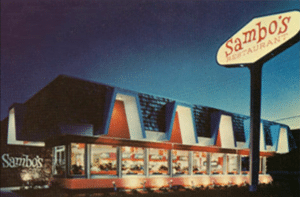
Sambo’s, known for its controversial name linked to a children’s book, managed to grow its chain despite the uproar. By 1979, there were over 1,000 Sambo’s spots. However, protests and changing sentiments forced some locations to change names. In 1981, the company filed for bankruptcy. Today, the sole remaining Sambo’s Restaurant in Santa Barbara is making strides toward a new identity.
Lum’s: From Hot Dogs to a Dimmed Light
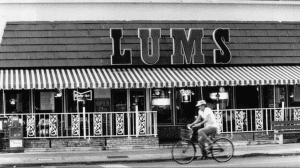
What began as a small Florida hot dog stand burgeoned into a franchise with 400 locations, offering beer-steamed hot dogs and frosted glass beers. However, by the late ’70s, the Lum’s flame started to dim, and the company was eventually sold. With the exception of a Nebraska location that closed in 2017, Lum’s lights went out by 1983.
Steak and Ale: A Feast for Steak Lovers
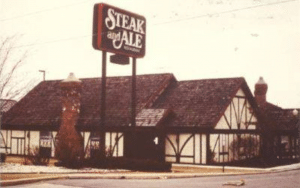
Steak and Ale brought a revolutionary concept to the table in 1966—affordable yet delicious steak paired with an unlimited salad bar. The chain won hearts with dishes like Hawaiian chicken and herb-roasted prime rib. Ownership changes and financial woes marked its ’80s journey, leading to a bankruptcy that brought down the curtain on this steak-loving haven.
Wag’s Dinner: Walgreen’s Culinary Foray
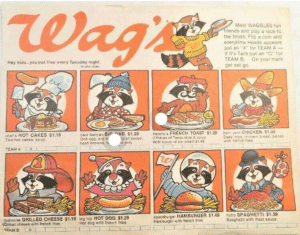
Wag’s, the restaurant arm of Walgreen’s, offered 24-hour dining in some of its locations. The family eatery even had spots built into the drugstore itself. With a presence of 91 locations, Wag’s journey took a turn when Marriott acquired it in 1988. Unfortunately, when Marriott decided to sell off its restaurant business, the final curtain fell on Wag’s in 1991.
VIP’s: Casual Dining at Its Best
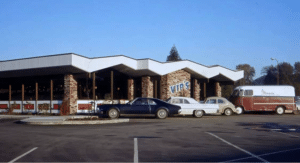
VIP’s, a beloved chain in the Pacific Northwest, epitomized casual dining at its finest. Originating in Oregon in 1968, VIP’s grew to 15 restaurants by 1971. However, as the ’80s rolled in, VIP’s sold more and more locations to Denny’s, gradually losing its place in the culinary landscape.
Red Barn: Fast Food with a Barn Twist
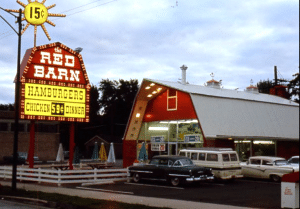
Shaped like actual barns, Red Barn restaurants were hard to miss. This fast-food chain, with its “Big Barney” and “Barnbuster” burgers and self-serve salad bar, made its mark in the ’70s. Although not as massive as other chains, Red Barn boasted around 400 restaurants in 22 states during its peak. Unfortunately, the late ’80s marked the end of the road for Red Barn as it faced a series of closures and changes in ownership.
Pup ‘N’ Taco: A Californian Gem
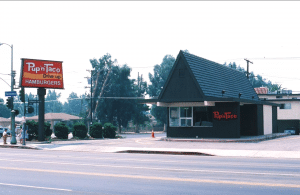
While not everyone may be familiar with Pup ‘N’ Taco, Californians certainly remember this unique spot. Pup ‘N’ Taco’s diverse menu featured hot dogs, tacos, tostadas, and pastrami sandwiches—a combination that surprisingly worked well. With 102 locations by the early ’80s, the chain’s story took a twist when Taco Bell acquired all Pup ‘N’ Taco locations in 1984, leaving behind a trail of memories for its loyal customers.
Arthur Treacher’s Fish & Chips: A Taste of England
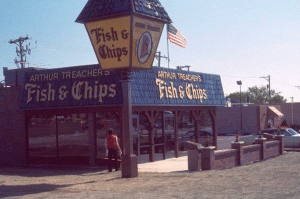
Arthur Treacher’s Fish & Chips, named after the English actor who played the butler in Shirley Temple films, aimed to popularize the British delicacy across the U.S. Founded in 1969, this fast-food chain served up crispy fried chicken, fish, and, of course, chips. At its peak, Arthur Treacher’s boasted over 800 stores. Despite sales and ups and downs, a handful of locations continue to carry on the legacy today.
Happy Chef: All-Day Breakfast Joy
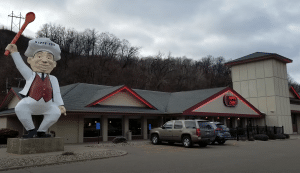
Happy Chef, with its promise of all-day breakfast, aimed to bring smiles to diners’ faces. Founded in Minnesota in 1963, this chain rapidly grew to over 60 locations across the Midwest. The absence of alcohol and changing tastes in the ’80s led to a decline in Happy Chef’s popularity. While most locations closed, the original Happy Chef location still stands, a testament to the era when hearty breakfasts brought happiness to many.
Burger Queen/Druther’s: A Regal Transformation
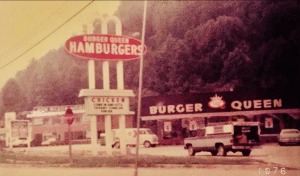
Burger Queen, which began in Florida in 1956, served up burgers and shakes to hungry patrons. In 1981, a transformation occurred, and the chain became Druther’s, expanding its menu to include fried chicken and a self-serve salad bar. With around 170 restaurants at the time, Dairy Queen eventually bought out all Druther’s locations in the ’90s, marking the end of an era.
BONUS:
Henry’s Hamburgers: The Burger Era Closes
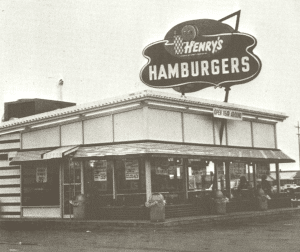
Henry’s Hamburgers emerged in the 1950s, offering 10 burgers for a dollar at its peak. With over 200 locations across the U.S., this burger joint was a hit. However, the fierce competition in the fast-food industry took its toll, and many Henry’s locations closed in the late ’70s. Today, only a single location in Michigan stands as a testament to a time when affordable burgers brought joy to many.

